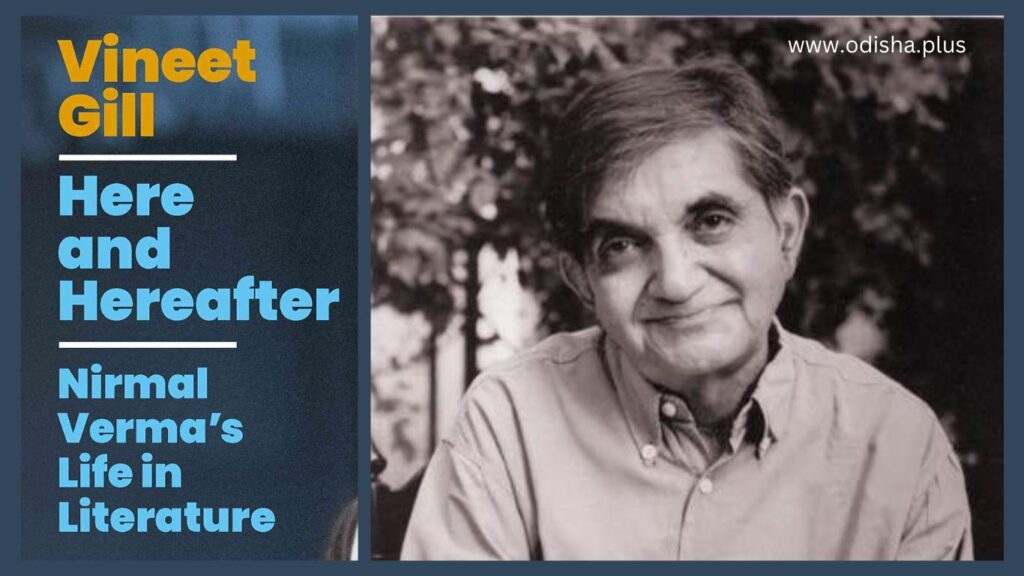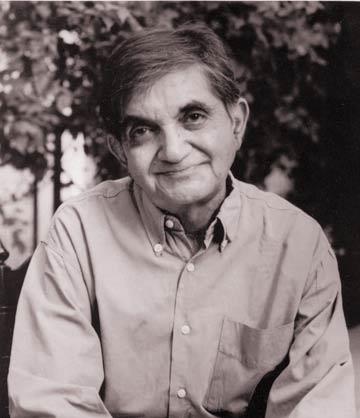Vinnet Gill
One of Verma’s earliest memories – from his school days in Shimla—was about the death of a friend, and about his first attempt at writing. The link between the original writerly impulse and the author’s first real encounter with mortality was highlighted by Verma himself. He was around twelve at the time.

The literary dream was beginning to take root, owing perhaps to nothing more than idle curiosity. He found inspiration through a friend named Amrit, his ‘moon-faced’ classmate who ‘was an exceptional football player’. One day, the boys decided to challenge themselves. Each was to take three days to write a story and present the finished piece to the other at the end of the allotted time.
In his novel The Enigma of Arrival, which is concerned with death and decay on both the personal as well as the civilisational levels, VS Naipaul makes a reference to the narrator’s ‘first death, against which he measured all the other deaths’. Amrit’s death held a similar significance in Verma’s life. ‘We couldn’t figure out till the end who had sent the message and how the death had occurred…In my memory, Amrit is still my classmate,’ Verma wrote decades later, in a short essay entitled ‘Likhne Ke Srot’ (The Origins of Writing).
The same piece mentions one more formative death – curious phrase, that – connected to the creative energy that the budding writer was cultivating, consolidating within himself. The woman is introduced to us as Miss Razdan, who was studying for a master’s degree in Sanskrit at Delhi University around the time Verma joined St Stephen’s College.

She also happened to be the editor of the college magazine and asked Verma for a contribution to its Hindi section: ‘If we don’t carry a story in the Hindi section, we’d become the butt of all jokes.’ And so, the first complete story Verma ever wrote was commissioned and published by Miss Razdan. The other thing she might be given credit for is holding open the door of the Hindi language for Verma, who might just as
well have chosen to write in English, the medium of his education at St Stephen’s. Miss Razdan later became a professor of Sanskrit, not long before she suddenly took ill and disappeared, as Amrit had. ‘One day I heard from her cousin that she was no
more.’
And in his fiction, he approached reality at an angle, doubtless with the intention toconfuse, distort and conceal – articulating through his stories both a fondness for and an aversion to the real, and affirming his faith in the old novelistic principle that without some degree of artifice there can be no art.
That explains why he never wrote about the deaths he was witnessing around him – of friends and family members – so directly and personally as he did about the two deaths mentioned in ‘Likhne Ke Srot’. At least he didn’t do so in the writings he chose to publish.
A couple of rare instances of Verma letting his guard down in this regard can be found in two letters he sent to Ramkumar at the time of their mother’s death. It happened in July 1971, when Verma was with his first wife and daughter in London. (Ramkumar sent a telegram to Verma: ‘Mother dead. She died without pain.’)
The first letter, dated 16 July, begins with these words: ‘Dear Ram, I don’t know what to write.’ Similar phrases recur, giving us the portrait of a writer struggling with language: ‘…this seems beyond my understanding’, ‘…could never even have imagined…’

Having recovered somewhat from the shock, he wrote the second letter the next day, this time really taking pains to probe his thoughts and feelings about his mother, and to lay his heart out on the page. He wrote, ‘…for me she ceased to exist in a sense when I left home, and in truth I will only be able to understand the terrifying reality of her ceasing to exist in this world when I once again return home.’
A few years later, the French critic Roland Barthes would write something remarkably similar about the death of his own mother: ‘Don’t say Mourning. It’s too psychoanalytic. I’m not mourning. I’m suffering.’
The hopeful patient in the hospital ward. Verma was dreaming the writer’s dream, feeling the frisson of a new literary project. What Barthes called ‘the vita nuova, a new work, a new love’.
One day, not long before he lost consciousness, Verma took off his oxygen mask and said to his brother, ‘Ramkumar, like those catalogues and essays on art by artists, published in Europe, are there any such books in India? After all, Indian artists have also written about their art – Husain, Akbar Padamsee, Raza, Swaminathan, and there must be more…I will edit this book…’
There were also moments of looking back, of stocktaking, with friends like the writer Krishna Baldev Vaid, who, in his obituary, wrote about his conversation with Verma in the hospital. They spoke of the books they had written and read; of the lives they had led.
A few days later Verma died, in the controlled environment of the ICU. Or rather, he was declared dead. He had been sleeping for three days. In one of his earliest short stories, ‘Diary Ka Khel’ (The Diary Game), published in his first book, Parinde, a character says, ‘How strange to be sleeping right before your death. That’s why I can’t fall asleep.’
(Excerpted from ‘Here and Hereafter: Nirmal Verma’s Life in Literature’ by Vineet Gill. With permission from publishers Vintage.)





























